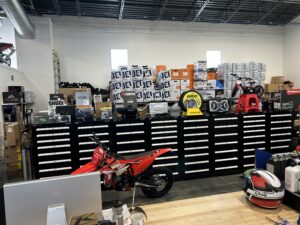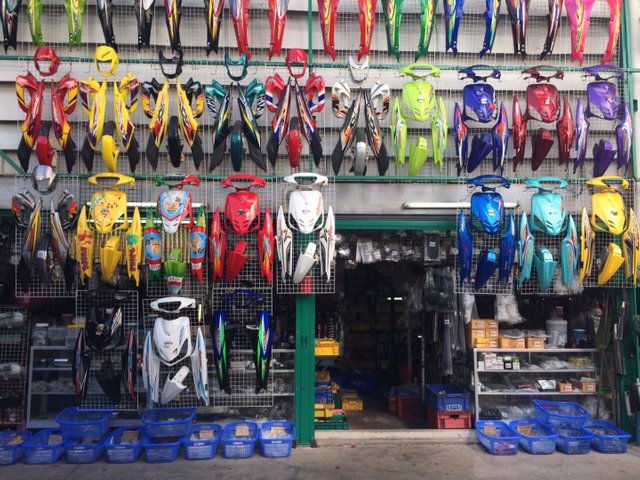Discover Top Quality Moto Parts NZ for All Your Motorcycle Requirements
Discover Top Quality Moto Parts NZ for All Your Motorcycle Requirements
Blog Article
Mastering Bike Gears: Just How to Enhance Your Riding Experience
In the realm of motorcycling, understanding the art of gear control is essential for boosting your riding performance. Appropriately making use of and understanding motorbike equipments can significantly affect control, fuel, and velocity performance, changing an average experience right into a seamless, thrilling trip.
Understanding Gear Mechanics
Exactly how do the ins and outs of equipment technicians affect motorbike efficiency? At the core of motorbike dynamics, gear mechanics play a pivotal role in converting engine power right into activity, inevitably determining rate and control. Gears, thoroughly crafted elements, enable bikers to optimize torque and rate, making certain a smooth shift with various surfaces and rates. The equipment proportions, thoroughly developed, identify the relationship in between engine transformations and wheel turns, affecting acceleration and gas effectiveness.
Comprehending equipment auto mechanics starts with recognizing the significance of the transmission, which houses multiple gears of differing sizes. These equipments interact via a procedure understood as meshing, where teeth of various gears involve to send power.
Furthermore, the principle of gear moving is indispensable to making the most of efficiency. Timely and smooth changes make certain that the engine operates within its optimal power band, stopping unneeded strain and improving long life (motocross parts nz). By comprehending these mechanical complexities, motorcyclists can achieve a harmonious blend of power, control, and performance, elevating their riding experience
Timing Your Shifts
Shift timing proficiency is essential for optimizing motorcycle efficiency and improving the riding experience. Effectively timed changes ensure that the engine operates within its ideal power band, which is critical for keeping control, achieving smooth acceleration, and guaranteeing the durability of the motorbike. Cyclists must develop an intuitive sense of when to shift gears, which involves understanding the relationship in between engine revolutions per minute (RPM) and speed.
To understand change timing, pay very close attention to the engine's noise and really feel, as these give vital clues concerning when to alter gears. When the engine comes close to the upper range of its power band without getting to the redline, the perfect change factor generally occurs - mx parts nz. Shifting prematurely can result in an absence of power, while moving far too late might cause unneeded engine stress
Additionally, roadway conditions and riding design influence change timing. In city settings, smoother and extra constant shifts might be needed to navigate traffic efficiently. In comparison, during freeway riding, fewer changes at higher rates can be much more ideal. Exercising in varied atmospheres will certainly improve your capacity to time shifts specifically, eventually boosting your riding experience to a professional degree.
Enhancing Fuel Performance
While mastering motorbike gears is critical for performance, boosting fuel efficiency is similarly important for both financial and ecological reasons. Optimum fuel consumption not only lowers functional costs but likewise lessens the eco-friendly impact of riding. To accomplish this, one need to recognize the detailed relationship between gear selection and engine performance.
First of all, picking the right gear at suitable speeds can considerably affect gas usage. Riding in a greater equipment at reduced rates can bring about engine hauling, which is detrimental to both fuel economy and engine health. Conversely, riding in lower gears at high rates causes unneeded gas usage. Therefore, preserving an optimal balance by shifting gears in positioning with roadway conditions and prepared for maneuvers is vital.
In addition, routine upkeep plays a crucial role in gas efficiency. Making sure that the bike is well-tuned, with clean air filters and correctly blew up tires, can improve the rules of aerodynamics and minimize gas wastefulness. Taking on a riding design that embraces progressive acceleration and smooth slowdown can contribute to much better fuel economy.

Strategies for Smooth Transitions
Accomplishing smooth equipment transitions is basic to enhancing the riding experience and ensuring the durability of a bike's transmission system. Proper equipment shifting not only adds to a seamless experience yet likewise reduces damage on the mechanical components. To more helpful hints grasp the art of smooth changes, bikers have to concentrate on a few crucial techniques.

Second of all, clutch control plays a crucial role. Engaging and disengaging the clutch smoothly requires practice. The clutch lever ought to be released gradually, allowing for a seamless transfer of power from the engine to the wheels without causing a jolt or abrupt movement.

Adjusting to Roadway Conditions
Browsing varied road conditions is a vital skill for any kind of motorcyclist intending to preserve control and security. Whether you're riding on wet surface areas, crushed rock roads, or biker riding boots navigating doglegs, your capability to adapt your equipment use and riding technique is paramount. Recognizing just how to change your gears suitably can substantially influence grip and stability, ensuring a more secure trip.
On wet roadways, it is a good idea to maintain greater gears to reduce torque and decrease wheel spin. This method helps maintain grasp on slippery surface areas, permitting smoother acceleration and slowdown. In contrast, when riding on crushed rock or uneven surface, lower equipments are preferable. Reduced gears provide far better control and enable you to react more promptly to unexpected adjustments in the road surface area.
Sharp curves require exact gear administration to stabilize speed and control. Downshifting before getting in a curve can assist keep energy while guaranteeing the motorbike continues to be stable throughout the turn. Constant practice in different problems boosts your ability to anticipate and react to modifications in roadway appearance and slope.
Conclusion
Grasping motorbike gears substantially boosts the riding experience by boosting velocity, gas, and control effectiveness. A comprehensive understanding of gear auto mechanics and exact change timing makes certain the engine runs within its optimum power band, while smooth changes through effective clutch and throttle coordination increase comfort and performance. Adjusting gear choice to different road conditions, such as utilizing higher gears on wet surfaces and reduced equipments on crushed rock, additional improves handling and security. Inevitably, these abilities raise the general journey.
Recognizing gear auto mechanics starts local motorbike shops with acknowledging the value of the gearbox, which houses several gears of varying sizes. These equipments communicate through a procedure understood as meshing, where teeth of different equipments engage to send power (motox parts nz). Mild adjustments to the throttle throughout equipment shifts can prevent jerky motions and maintain a regular riding pace
Whether you're riding on damp surfaces, crushed rock roadways, or browsing sharp turns, your ability to adjust your gear use and riding method is paramount. Adjusting gear choice to various road problems, such as using greater equipments on wet surface areas and lower equipments on gravel, further improves handling and safety and security.
Report this page